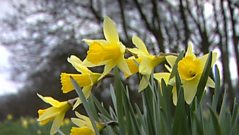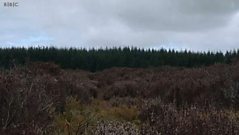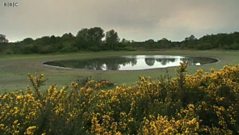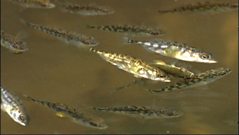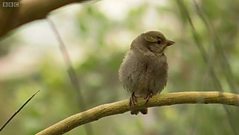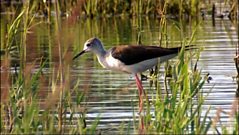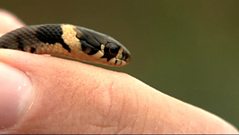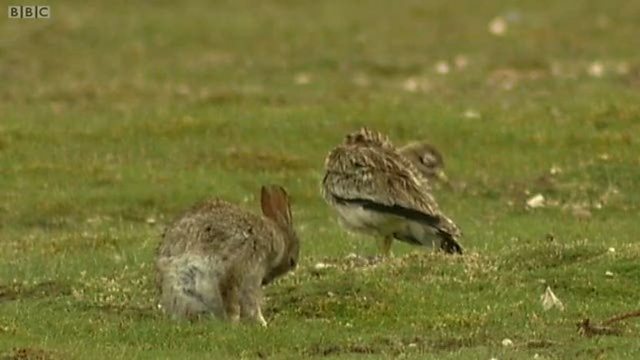
Busy bunnies
Rabbits maintain the heathland so it's just right for stone curlews.
The Brecks on the Norfolk-Suffolk border used to be covered in trees until stone age farmers cleared them away. The farmers exhausted the soil and moved away, leaving a well-drained, sandy soil much loved by rabbits, as it is perfect for burrowing. They are born blind and hairless, so the underground warren is a safe nest. During the breeding season one female rabbit can produce up to seven young every month - which is why the Normans farmed them. Chris Packham visits a 500 year old Norman warrener's lodge. Back then the landscape would have been open plains with no trees. The warreners have gone, but the rabbits are still here. And though they're maybe not one of Britain's most interesting animals, rabbits manage the landscape to the benefit of another that is: the stone curlew. Norfolk's Weeting Heath is the place to see stone curlews. It's fenced to keep the rabbits in - an open habitat perfect for the birds. Without the rabbits' grazing the heath would become covered in shrubs and trees and there would be no stone curlews. Tim Cowan of the RSPB watches stone curlews with Chris. They are rare and easily disturbed, you don't just happen across these elusive birds, so Weeting is the best place to see them and not disturb them. They are more active at dawn and dusk so don't give up if you don't see one straight away, stay put with a flask, or get up early!
Duration:
This clip is from
More clips from Spring: Moorland and Heaths
-
![]()
A golden host
Duration: 02:21
-
![]()
For the birds
Duration: 01:13
-
![]()
Pingo ponds
Duration: 01:31
-
![]()
Merely there
Duration: 00:22
More clips from Nature's Calendar
-
![]()
Bizarre behaviour—Series 1, Summer: Parks and Gardens
Duration: 01:27
-
![]()
Hot-housing sparrows—Series 1, Summer: Parks and Gardens
Duration: 01:42
-
![]()
Long-legged lovelies—Series 1, Summer: Wetland
Duration: 02:38
-
![]()
Young grass snake—Series 1, Summer: Parks and Gardens
Duration: 01:30

